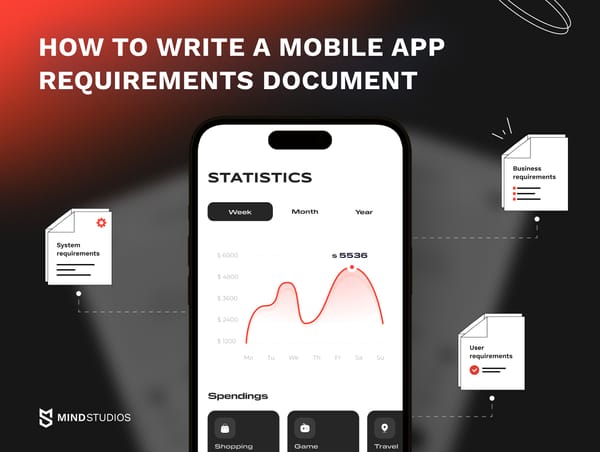Both AI and wearable technology in healthcare have led to major changes in our approach to patient care, diagnostics, emergency response, and medical research. However, once these two were combined, they triggered a truly revolutionary era in the healthcare industry.
Artificial intelligence and wearable technology have turned out to be a perfect match. While wearables collect medical data, AI solutions analyze and interpret it in real time, which enables medical professionals and patients to embrace a proactive approach to healthcare.
The impact of these technologies is becoming especially noticeable with wearable technology evolving and becoming more diverse, as well as AI solutions rapidly getting smarter thanks to the use of deep learning techniques, neural networks, and reinforcement learning. Wearable technology has revolutionized healthcare by offering innovative solutions like heart rate tracking apps that monitor and analyze cardiovascular health.
In this article, we delve into the benefits and use cases of AI-powered wearable technology in healthcare. Additionally, based on our own experience, we share tips and tricks on how healthcare organizations can integrate it into their day-to-day operations and leverage the power of this tech trend.
Global wearable AI market size
AI integration alone can be quite costly, so its combination with wearable technology is a significant investment, especially for healthcare organizations that often have to face financial challenges. So, how significant is the competitive advantage the adoption of AI wearables brings? The answer partially lies in the market analysis.
In 2022, the global wearable AI market size was valued at USD 21.2 billion and is expected to grow at a CAGR of 29.8% from 2023 to 2030. The drivers of this rapidly increasing adoption include the advancement of IoT, wireless technology, and the increasing popularity of smartwatches. As for medical wearable AI devices, they saw a powerful spike in popularity during the COVID-19 pandemic, during which the demand for remote care skyrocketed.
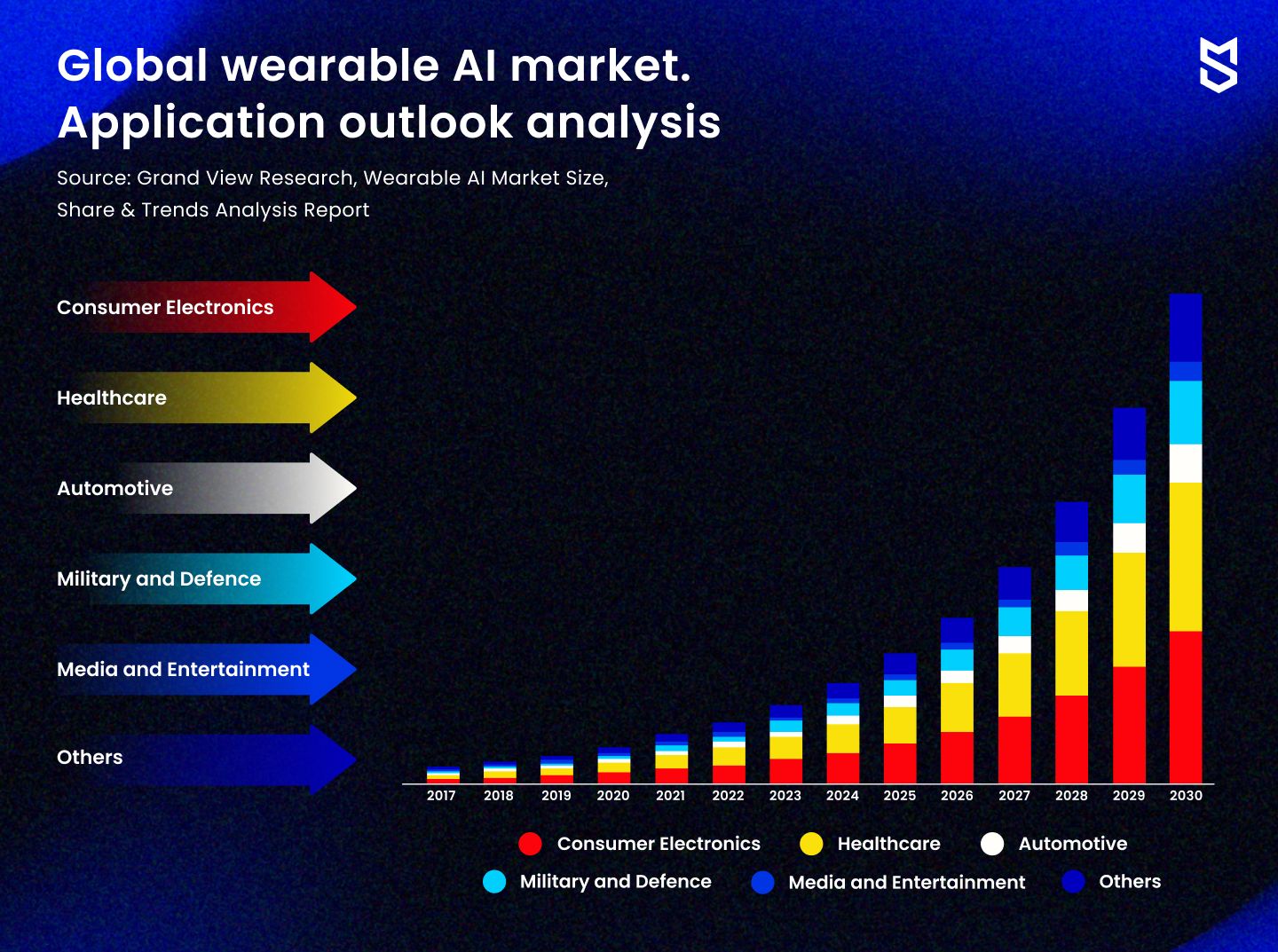
[Source: Grand View Research]
The biggest wearable AI technology segments by application types include consumer electronics, healthcare, automotive, military and defense, and media and entertainment. However, the healthcare wearable AI device segment is expected to show the fastest growth rate from 2023 to 2030.
The primary reason for this is the growing customer concerns over fitness and health. But advancements in wearable AI technology in healthcare have also played a major role in the rapid adoption rates.
Benefits of wearable AI in healthcare
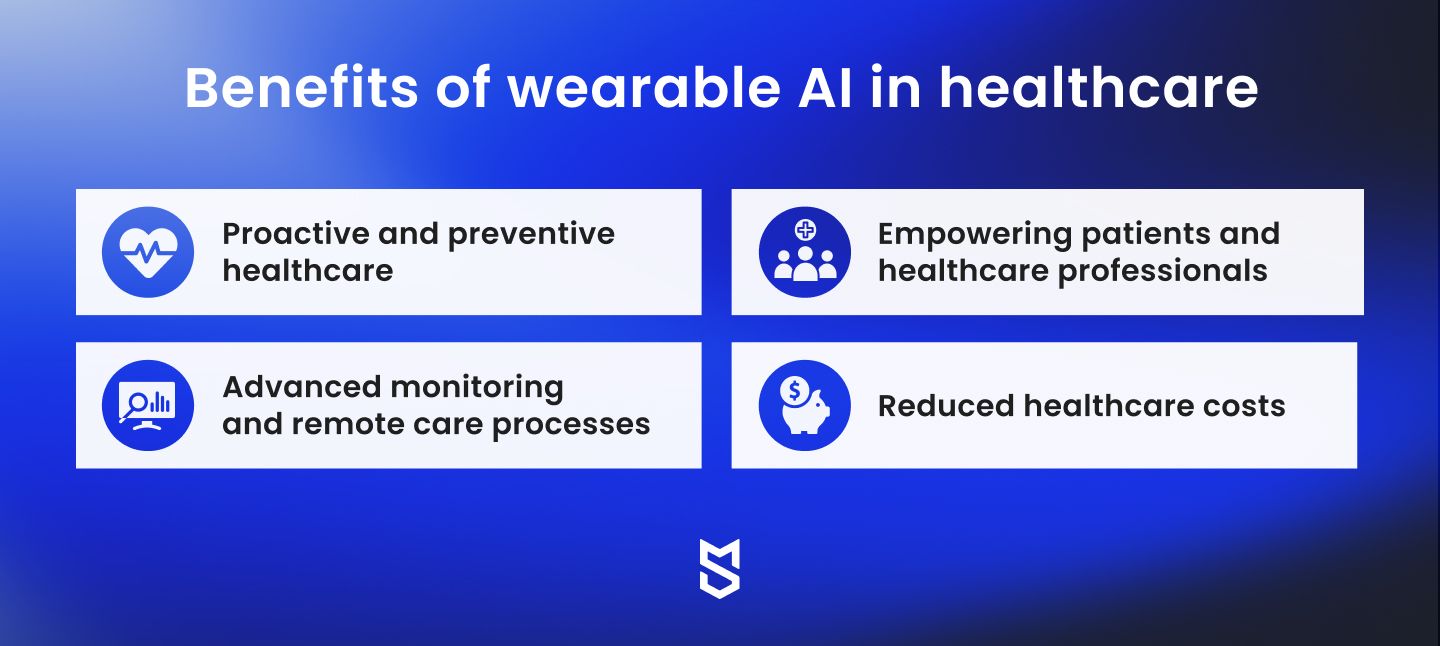
The competitive advantage is not the only reason healthcare organizations and health tech companies invest in AI-powered wearables. In fact, there is a wide range of game-changing benefits for patients, doctors, and other healthcare professionals (HCPs) that drive the popularity of this technology. Let’s go over the most significant of them.
Proactive and preventive healthcare
Modern technology trends, including AI wearables, have been pushing medicine from a reactive to a proactive and preventive approach. To be more specific, wearable technology helps continuously monitor users’ health, detect any abnormalities and potential hazards at early stages, and connect patients with HCPs for timely intervention.
This is possible thanks to the use of AI algorithms that analyze patterns and trends in the data collected by wearables. As a result, healthcare providers can enhance care delivery and help their patients avoid critical medical situations. This is especially effective when dealing with conditions like cardiac arrhythmias, sleep apnea, and chronic diseases like diabetes.
Advanced monitoring and remote care processes
AI wearable devices can continuously monitor and analyze a wide range of vital signs and health parameters, including heart rate, blood pressure, ECG/EKG signals, oxygen saturation, blood glucose, sleep patterns, and activity and movement patterns.
This allows patients to receive more efficient remote care services since AI wearables enhance telemedicine by gathering objective valuable data for remote consultations. As a result, healthcare organizations can provide healthcare services to people in remote areas or those with limited mobility.
Empowering patients and healthcare professionals
In the last decade, the approach to healthcare among patients has shifted toward proactive health self-management, meaning they want to gain more control of their health conditions. AI-powered wearables provide patients with access to real-time data and valuable personalized insights, helping them stay informed and encouraged.
At the same time, as healthcare facilities are dealing with staff shortages, especially nurse shortages, AI wearable devices can help decrease staff workload by enabling remote monitoring and even reducing the need for personal visits and hospitalization. And since burnout is among the top reasons for HCPs quitting, a more adequate workload can help healthcare organizations slow down the staff shortage problem.
Reduced healthcare costs
As we’ve established, AI-powered wearable technology helps improve diagnostic processes, minimize the need for expensive medical interventions and emergency services, and reduce in-person visits.
Moreover, such devices help streamline healthcare processes by automating certain tasks and helping HCPs prioritize cases more efficiently. Naturally, all this leads to reduced medical costs for both patients and healthcare providers.
Use cases of AI wearables in healthcare
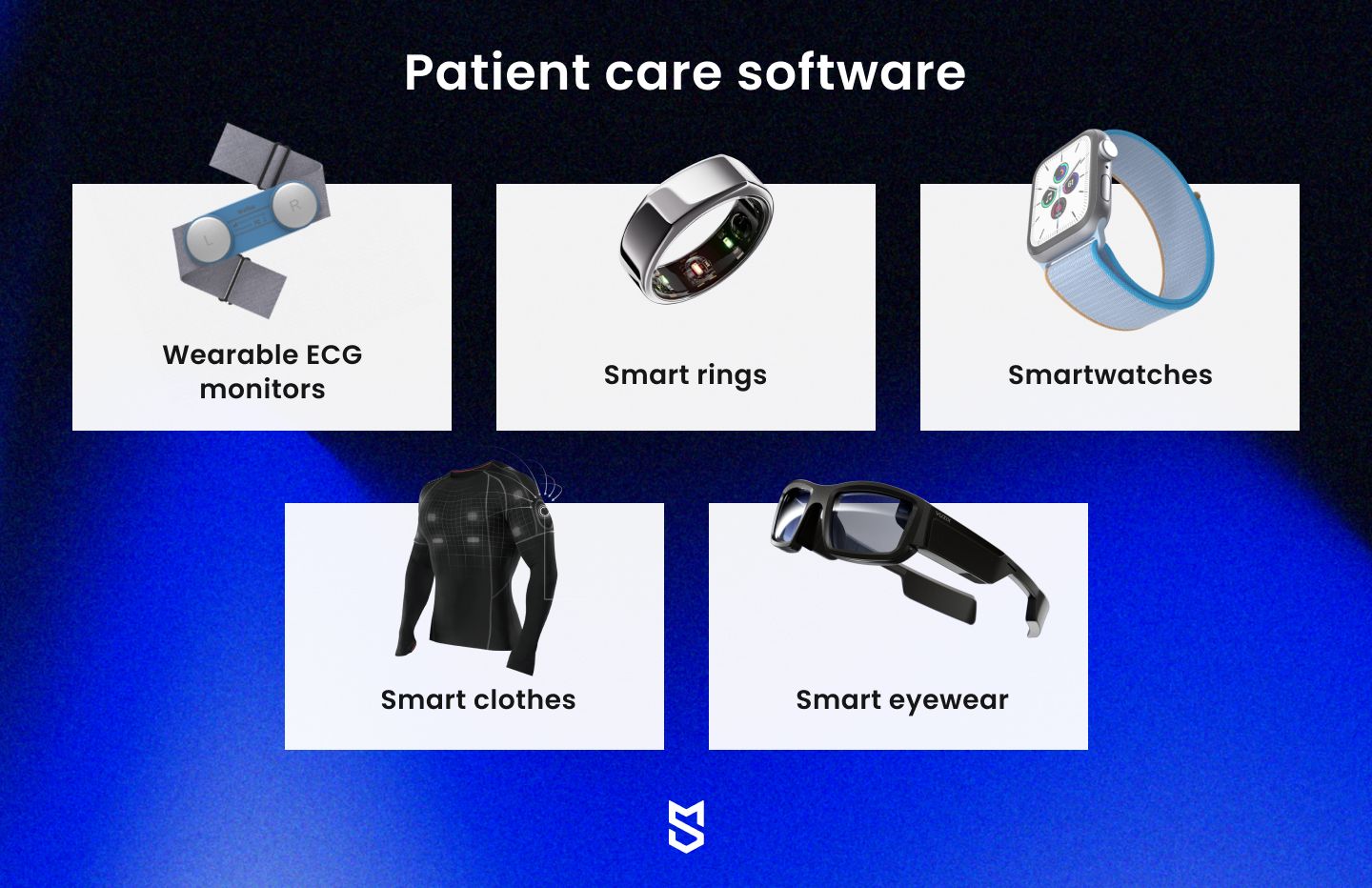
There are dozens of examples of how healthcare providers use AI-powered wearables. However, in this particular article, we focus on the most versatile ones that can be of use to most medical organizations that strive to enhance their patient care services.
Chronic disease management
One of the core trends in the healthcare industry is empowering patients and enabling them to take a proactive approach to health management. Medical AI-based wearable technologies allow just that.
Wearable AI devices assist patients with managing chronic conditions by monitoring, analyzing relevant health data, and keeping the user connected with their HCPs. This enables early detection of dangerous symptoms and personalized interventions when they are needed.
To give you an example, Livongo is an AI-powered system created specifically for people with diabetes. It consists of a glucose meter collecting blood glucose readings, a companion cloud platform that receives this data, and a mobile app where users can manage their condition and communicate with HCPs.
Livongo uses AI algorithms to analyze the information collected and deliver personalized insights, trends, and health management recommendations based on historical data and individual characteristics.
By the way, Mind Studios has also worked on a solution designed to help people recovering from injuries and dealing with chronic illnesses. Now Envol, the brainchild of our clients Julie Morin and Tim van Driessche, has over 30,000 users, helping them heal through holistic practices backed by medical research.
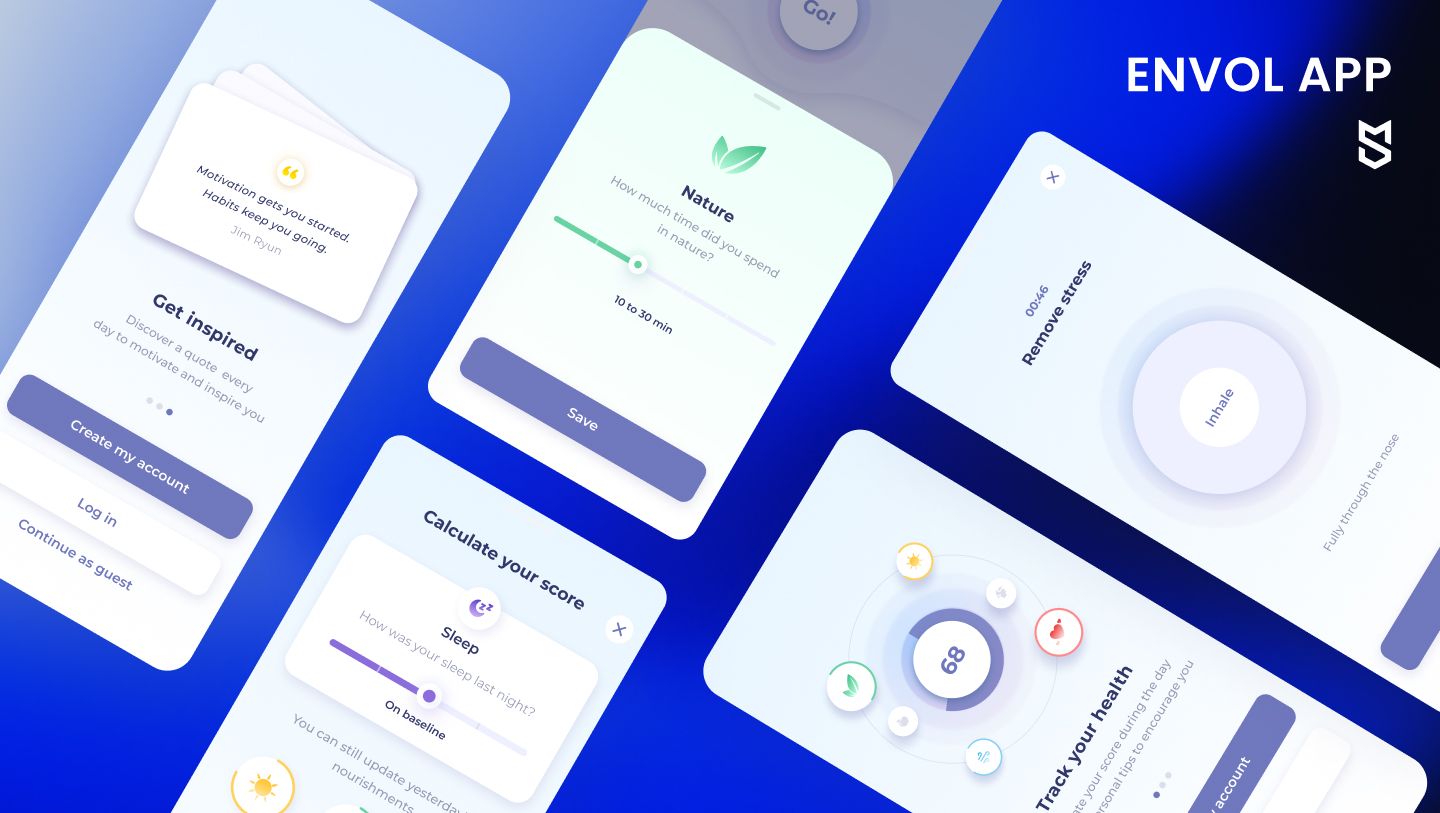
Medication adherence
AI-enabled wearables are also used for medication adherence support for people following medication intake plans. In this case, AI algorithms are usually used to deliver personalized reminders and notifications, track medication intake, and analyze adherence patterns.
Some devices even dispense medications automatically or offer other features that ensure medication intake. For example, Memo Box is a smart pillbox powered by AI to monitor and improve medication intake. It has compartments for different medications, sends reminders, and can track pill consumption to provide usage reports to healthcare providers and caregivers.
While Memo Box is not exactly a wearable device, it is connected to a companion app that can send notifications to users' wearable devices, such as smartwatches.
Remote patient monitoring
AI wearable technology has become one of the key drives of remote patient monitoring advancements. Such solutions enable continuous and real-time tracking and analyzing of vital signs like heart rate and rhythm, blood pressure, and oxygen saturation. This is especially helpful to patients going through post-operative care.
They also can monitor physical activity and other health metrics like sleep patterns or stress levels. So, naturally, wearable AI devices can be used to monitor physiological and behavioral indicators connected to mental health and, thus, provide guidance to users who want to improve their mental well-being.
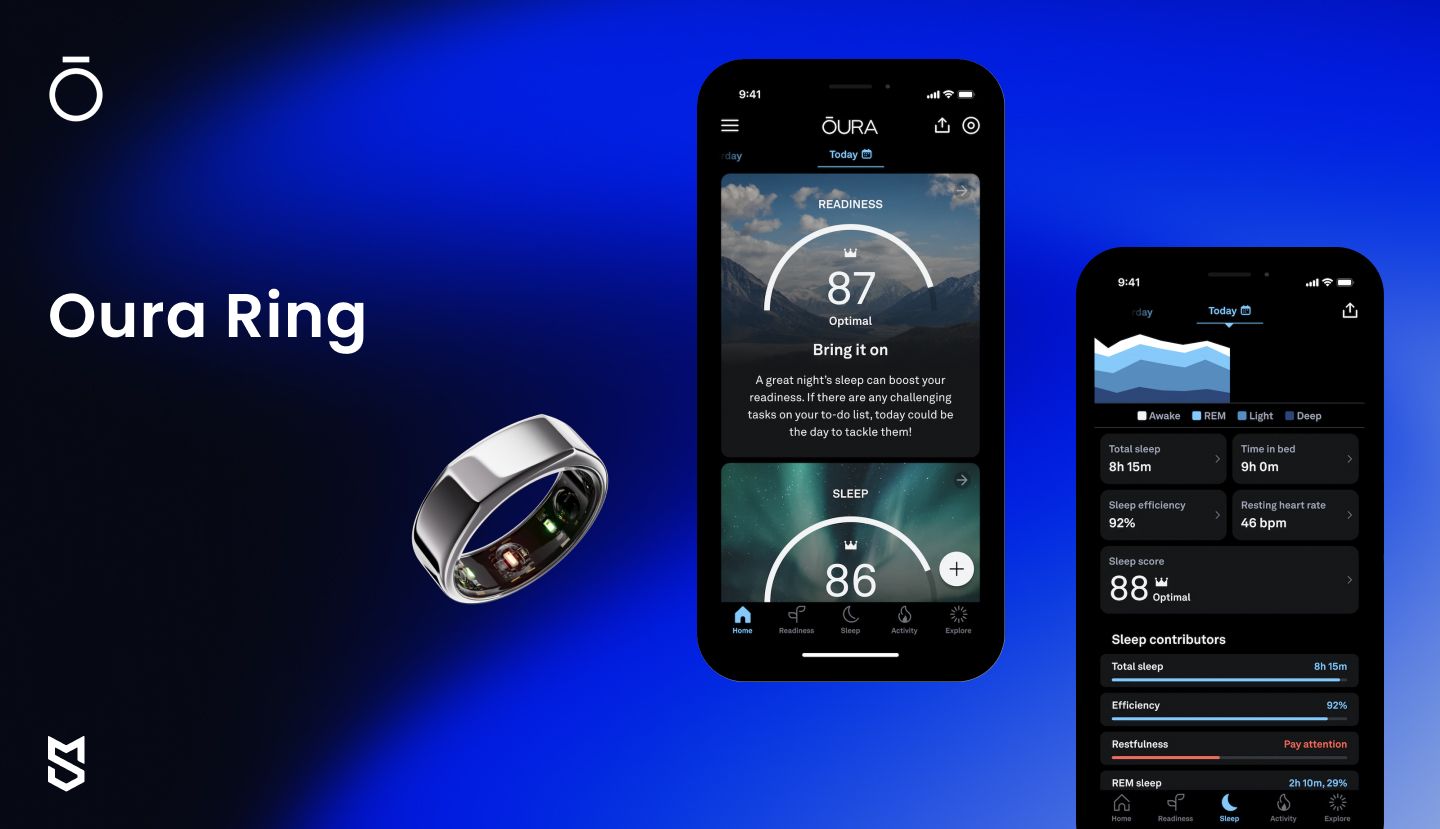
AI wearable health monitoring devices come in different shapes and sizes, including smartwatches, smart clothing, patches, and head-mounted devices. For instance, Oura Ring, as is evident from the name, is a smart ring that users can put on their fingers. It is equipped with sensors, including a PPG sensor, an infrared LED, temperature sensors, a 3D accelerometer, and a gyroscope.
Oura Ring collects data on sleep patterns, body temperature, and activity levels. Then, the companion app’s advanced algorithms and machine learning for healthcare are used to analyze the information and generate personalized insights and recommendations.
Assistance for people with disabilities
AI wearable technology in healthcare for people with disabilities aims to enhance the lives of individuals with physical, sensory, or cognitive impairments by providing innovative solutions and support. Here are some common AI wearable solutions for people with disabilities:
- Mobility assistance AI wearables, including exoskeletons, robotic limbs, and smart prosthetics powered by AI to interpret user inputs and enable control of the technology
- Cognitive support solutions for people with cognitive disabilities that use AI algorithms to determine behavior patterns, provide personalized cues, and support cognitive tasks like medication reminders, instructions for daily activities, and more
- Communication assistance AI wearables that use NLP and ML algorithms to support individuals with speech or communication disabilities by interpreting gestures, brain signals, etc.
- Sensory augmentation tools such as wearables that convert sounds into vibrations and visual cues, or vision enhancement wearable devices that capture and process visual information
One example of such health tech products is ReWalk Exoskeleton, a wearable robotic exoskeleton designed for people with spinal cord injuries. The technology utilizes AI to detect the user's movements and intentions, enabling natural and intuitive control of the robotics. As a result, users get the support needed for standing, walking, and even climbing stairs.
Elderly care
AI-powered wearables for supporting elderly users typically combine the functionality of the solutions mentioned above. Such devices can monitor vital signs, send medication reminders, and enable timely detection and prevention of emergency situations.
Additionally, these wearables are equipped with motion sensors and AI algorithms to detect falls or changes in movement patterns and send alerts to caregivers or emergency services. For instance, CarePredict utilizes AI and ML to monitor the activities of seniors and alert caregivers or family members about potential dangers when it detects changes in behavior.
As a result, these devices play an important role in empowering elderly patients and providing them with an opportunity to maintain autonomy while still being looked after.
Setting up AI wearable medical devices
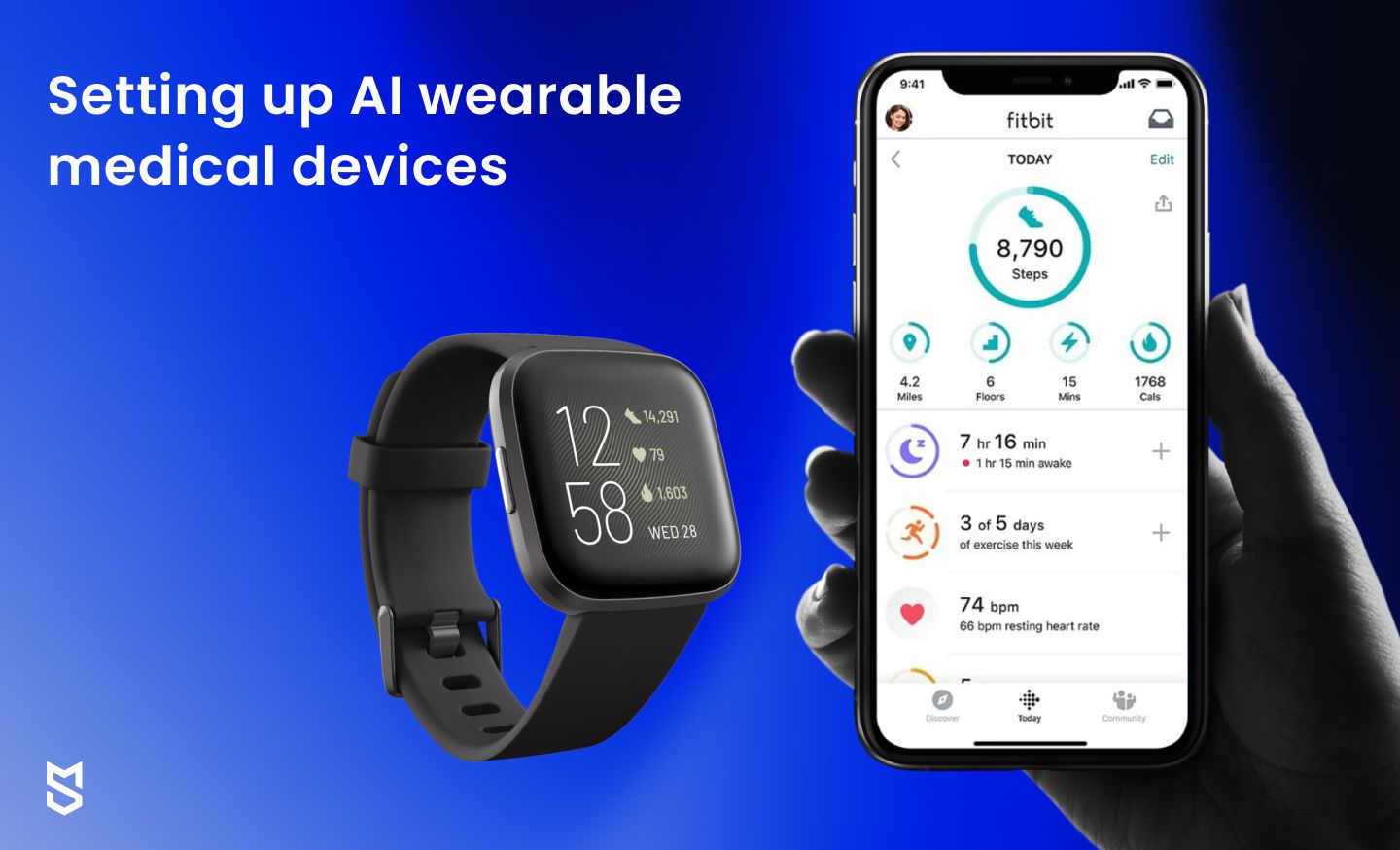
Mind Studios has worked with healthcare projects, AI solutions integration, and IoT, and we regularly share insights into adopting these technologies. So, if you want to find out more about artificial intelligence implementation, check out our article on integrating AI into healthcare software solutions.
In this section, we focus on how to actually set up AI-enabled wearables and connect them to your existing healthcare solutions. The instructions will be helpful to both the healthcare professionals and the patients using them.
Step 1. Unboxing the AI wearable device
Let’s say you’ve already chosen a specific type of AI wearable device. The first thing to do after receiving it would be to unbox it and inspect every component, as well as accessories and documentation that come with it.
Afterward, you need to follow the manufacturer’s instructions and charge the device or power it, depending on the power source. If the device supports wireless connectivity like Bluetooth or Wi-Fi for data transfer and syncing with other devices, you can also connect it to a suitable network.
Step 2. Connecting the device with the companion software
AI wearable devices in healthcare come with companion software, often mobile apps. Therefore, the next step is to download and install the respective app and follow the instructions to pair the AI wearable device with your computer, tablet, or smartphone. The pairing process typically involves Bluetooth pairing or scanning QR codes for authentication.
The companion software can be a ready-made solution from the AI wearables manufacturer. However, if it doesn’t cover all your requirements, including those connected to security, you can connect the devices with your own software. For instance, the Mind Studios team can build a custom web or mobile solution to integrate with the selected wearables or upgrade your existing software for that.
Step 3. Going through the initial setup process
Once the wearable devices are paired with the corresponding software, the latter will provide a guide through the initial setup process. For instance, patients may need to create a personal profile and fill it with various information like age, height, weight, health conditions, health goals, etc.
At this point, there will also be an option for sharing data with other apps or devices, such as permissions for the wearable device to sync up with health and fitness apps, EHR systems, etc. The data Integration and sharing setup may require configuring APIs and going through data transfer settings.
Step 4. Device calibration and personalization
Depending on the wearable device’s type, there can be additional calibration steps, like placing the sensors in a certain manner for accurate data collection and optimal performance.
For instance, wearables need to make proper contact with the body while not causing users any discomfort. Moreover, the calibration may involve inputting reference values, performing specific movements, or following other instructions made by the manufacturer.
After that, users can also explore the settings and customize the wearable device to suit their needs. This usually includes adjusting display settings, notifications, personal goals, and other parameters for the intended healthcare purpose.
Step 5. Solution maintenance and support
To ensure the solution is efficient, users need to take care of the device as per the manufacturer’s instructions and regularly update the companion software and firmware to get access to new features, security updates, etc. We also suggest keeping detailed documentation of the setup process, including configurations and settings.
Ensuring data privacy and security
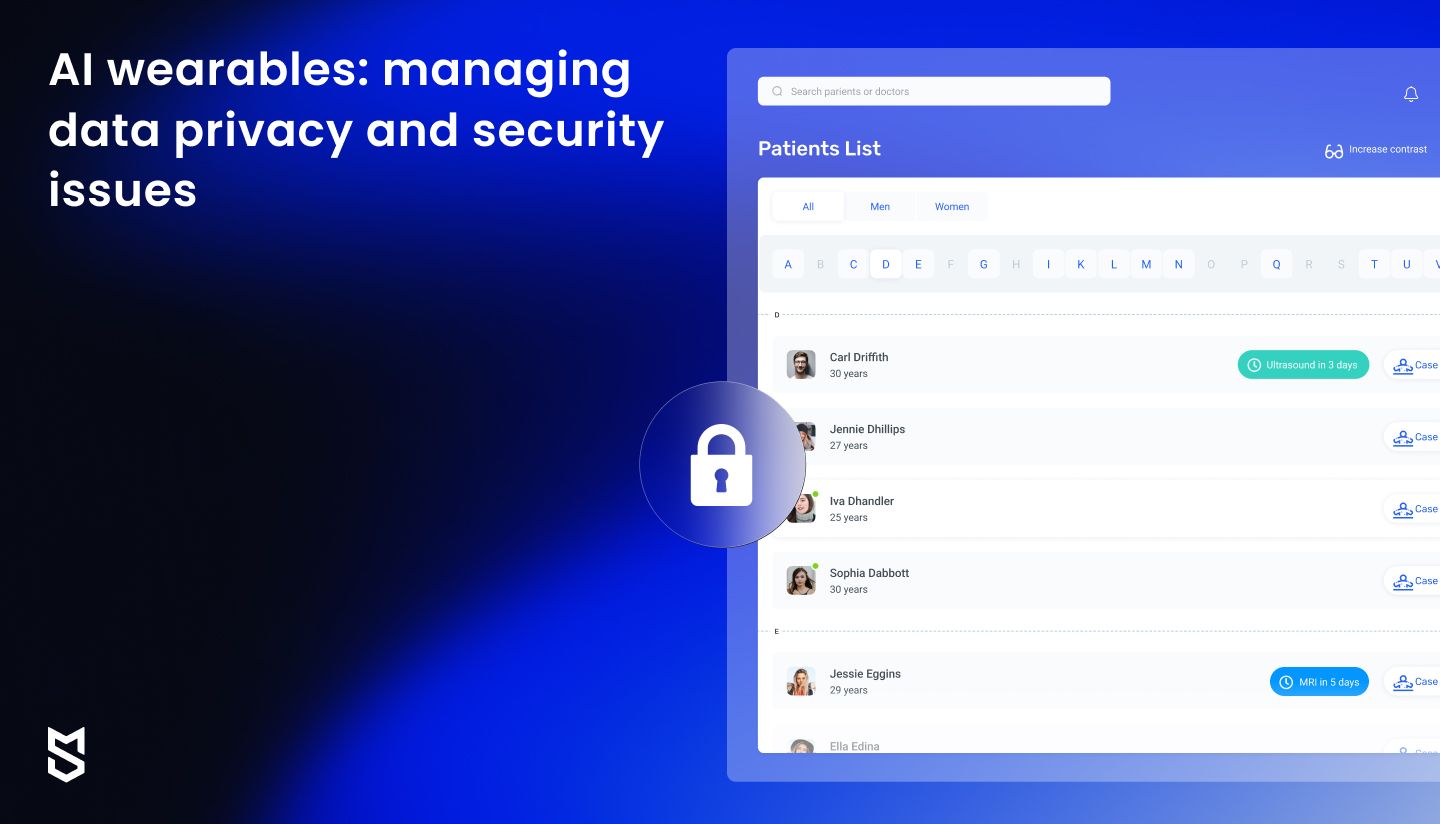
Whenever the topic of trending technologies like wearable devices and integrating AI into healthcare comes up, it’s impossible to avoid addressing challenges related to data privacy and security regulations the industry is known for.
Healthcare organizations are obliged to protect their patients from data breaches that can lead to medical errors, identity theft, financial fraud, reputational damage, and other severe consequences. Therefore, it’s no wonder the healthcare industry is subject to numerous strict legal and regulatory frameworks for patient data protection.
So, is it possible to successfully adopt wearable devices and AI in healthcare while following all those healthcare AI regulations? To answer this question, we dove into invaluable insights on the matter shared by João Bocas, a globally recognized digital health influencer, an expert in wearable technology, and CEO at Digital Salutem.
In his article on critical challenges in wearable technology, two out of four issues are connected to information: data transaction challenges and data security and privacy challenges. Here, we’ll focus on the latter.
AI wearables gather and process an enormous amount of personal health data, which means healthcare providers and entrepreneurs in health tech are responsible for the secure transfer and storage of this information. To achieve this, they can:
- Employ robust security measures and strong encryption techniques like end-to-end encryption, secure protocols, and algorithms, implemented together with cybersecurity experts
- Enforce strict access controls, which involves limiting access to sensitive data to authorized personnel only, implementing role-based access control (RBAC), and introducing multi-factor authentication (MFA)
- Maintain compliance with relevant regulations, such as HIPAA in the US or the GDPR in the EU
- Conduct regular and comprehensive risk assessments to proactively identify vulnerabilities and potential threats before they lead to harmful consequences. This includes evaluating the existing security measures, the reliability of third-party services, etc.
- Establish ethical data practices when collecting, storing, and using patient data. These principles include transparency, obtaining informed consent, and allowing users to maintain control over their data
While these recommendations are familiar to those who’ve been working with health tech products, João Bocas highlights one more important step: patient education.
“Patient education is crucial in addressing data security and privacy concerns related to wearable technology. Patients must be informed about how their data is being collected, stored, and used, and what measures are in place to protect their privacy and security. Education can also help patients understand the potential benefits of wearable technology and encourage them to use it as part of their healthcare regimen.”
Mind Studios supports the idea of educating users, both healthcare providers and patients, about data privacy and security practices. This is why we encourage our clients in the healthcare industry to conduct training sessions on handling personal health data and raise awareness about potential risks of privacy violations.
Conclusion
Artificial intelligence and wearables have been intertwined to get us one step closer to a truly patient-centered, proactive, and accessible healthcare system. By leveraging the power of these technologies, healthcare organizations and health tech companies get a significant competitive advantage and, most importantly, enhance the quality of the services they provide.
We believe this guide can become the first step in the transformative journey to embracing AI-enabled wearable technology. However, we also urge you to keep in mind that your particular project might need a different approach than we’ve described here, and our team is ready to help you discover it.
Depending on your requirements and budget, Mind Studios can help you build custom software solutions enhanced with AI and wearable technology or upgrade your existing solutions with those. Fill in this short contact form, and our business development team will arrange a free consultation for you shortly.

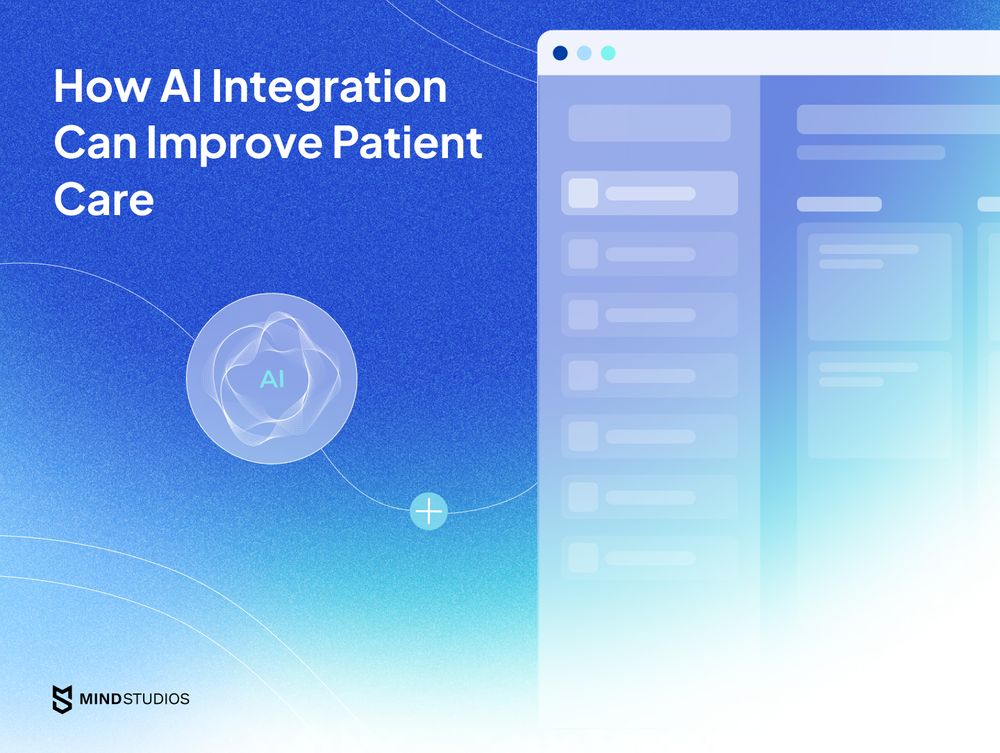
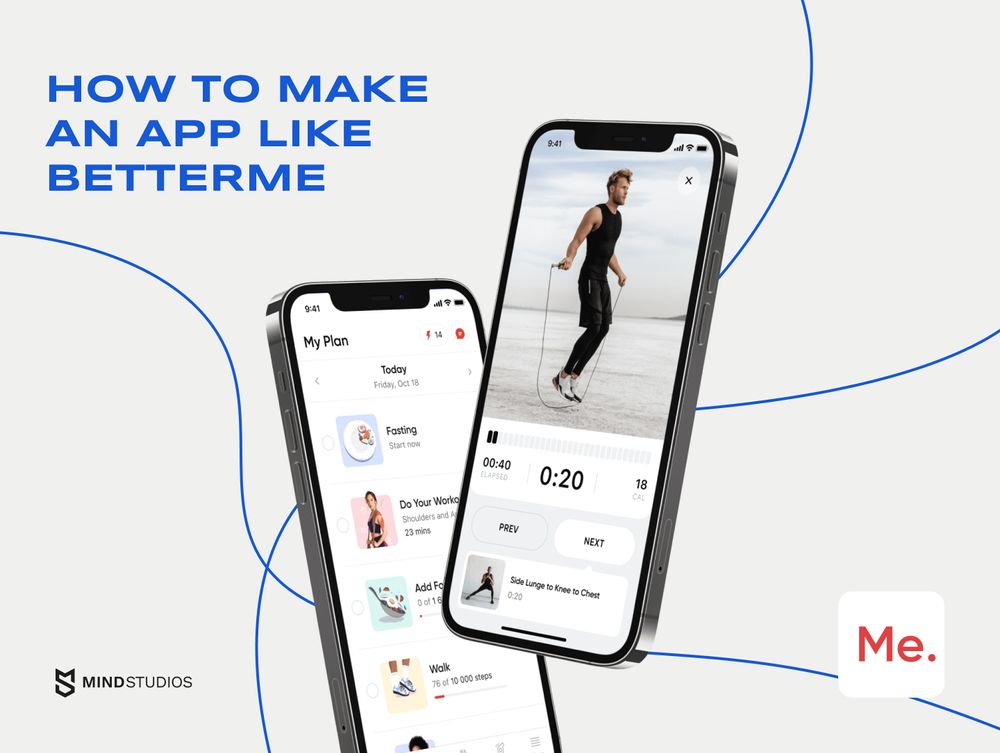
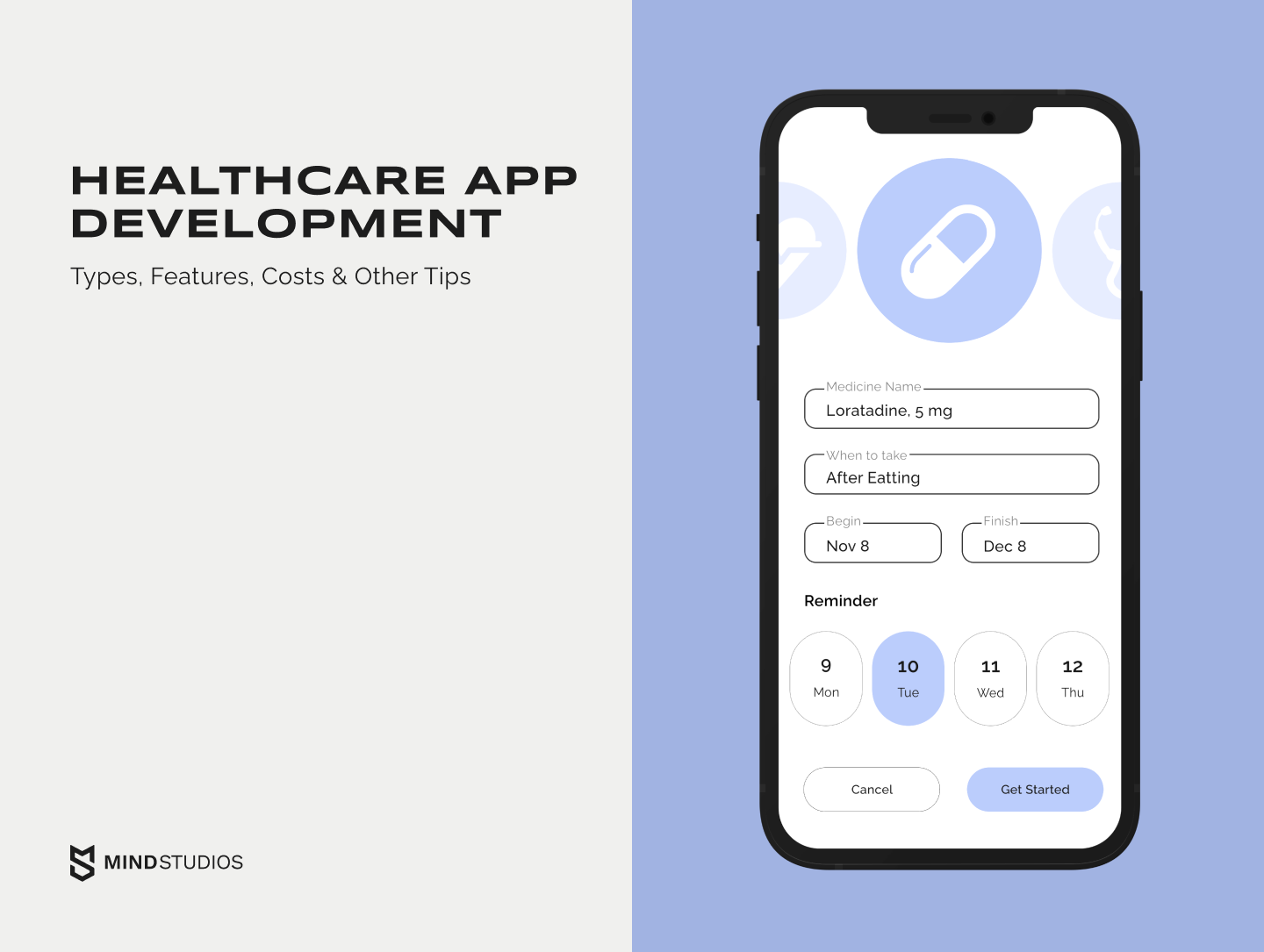
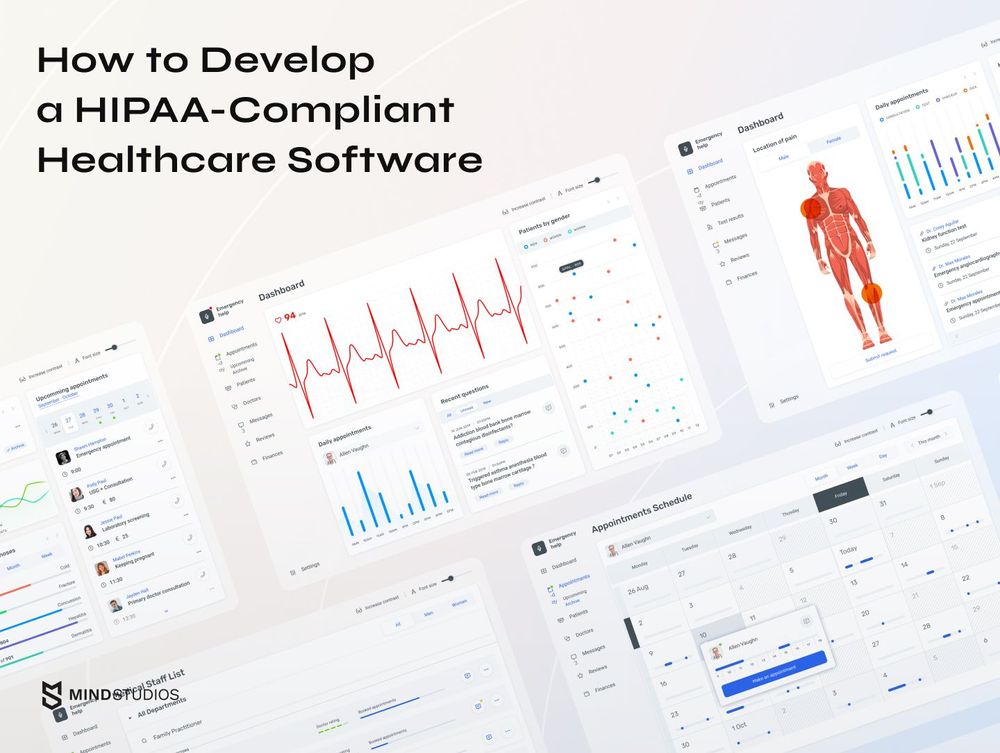



![How to Create an On-Demand Medicine Delivery App [Expert Guide]](https://themindstudios.com/blog/content/images/size/w600/2025/03/IMG-1-Cover-6.jpg)
